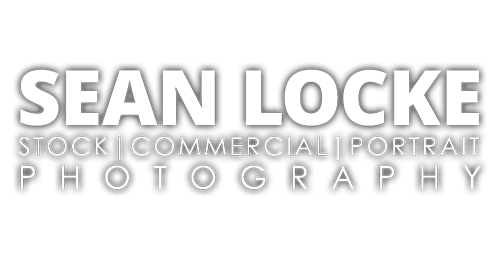Stocksy is a new entrant to the wide, wide world of stock content agencies online. The content on Stocksy is sold with a Royalty Free License to buyers, who then use it in their projects. With the unique and interesting collection that is growing at Stocksy, there may be buyers who are not used to an RF license agreement, or who are interested in the details of this specific agreement. Lets take a look at the CLA (Content License Agreement)…
Royalty Free
First of all, you can find the text of the CLA here (click). Now, the reader may notice that nowhere in this document does it state that anything is “Royalty Free”. Well, what is “Royalty Free” (RF) anyways? RF is just an industry term that encompasses all “pay one time for perpetual use” licensing. This is in contrast to “Rights Managed” (RM), where you pay for a specific set of rights or uses, defined by industry, geographic location, size, etc. The following is what makes the Stocksy CLA an RF license:
Subject to the terms and conditions of this Agreement, STOCKSY hereby grants to the User Member a non-exclusive, perpetual, worldwide, non-transferable sublicense to use, reproduce or display the Content in accordance with the sublicense option(s) selected by the User Member as each option is described below.
It’s non-exclusive, it’s perpetual, and it’s not limited by location. That’s pretty much the definition of Royalty Free. Just keep in mind that, as mentioned, the buyer must pay for the rights to use the content. The “Free” in “Royalty Free” means the buyer is free from making further payments once the initial price is paid. The Stocksy licenses are based on size and are priced at $10, $25, $50 and $100.
Standard License
Now that a license has been purchased, what can the buyer do with the image? With the standard license that is sold with every image, the buyer has a wide variety of things they can use the content for. To start:
advertising, editorial and promotional projects, including hard copy printed materials, product packaging, presentations, advertising, editorial and promotional purpose film and video presentations, commercials, catalogues, brochures, promotional greeting cards and promotional postcards (i.e. not for resale, license or other distribution) up to 250,000 copies;
When it comes to business, the general intent of this sort of RF licensing has been to provide content to help the buyer promote or advertise their business. Not to use the content to directly make money, as in selling a shirt with the content on it. To that end, the buyer has all sorts of options, in this case dealing with physical items, such as:
- a marketing brochure to hand out to clients, with the content as background image
- a promotional calendar sent through the mail with content as the monthly image
- packaging for a brand of cereal featuring models outdoors
- content on the front of a postcard promoting an upcoming event
- a gym designs a poster with an inspirational message to be displayed in a workout area
- an in-flight catalog uses content as part of an ad for a product
- a newspaper uses content to accompany an article
- a business includes content in a video to be displayed at a trade show
- content is included in a text book about birds
The print restriction of 250,000 copies is cumulative. A newspaper with a circulation of 100k may use the image twice, but a third time would require an extended license to be purchased. When it comes to electronic usage, the license includes:
an unlimited number of impressions for the purpose of on-line, electronic, and mobile publications and mobile applications, including web pages and advertising, promotional and editorial projects, to a maximum of 800 x 600 pixels for image or illustration Content and 800×600 pixels for video content
Basically, there is no “print” limit on electronic usage, but display size of unmodified content is limited to a certain size to help prevent others from illegally copying and using large files they grab off the internet. There really isn’t a lot of need to display unmodified content like that anyways. Examples:
- content is used as the background of a header on a website with text over it
- a news organization uses an image to accompany an online article
- an image is included in an e-book on cooking
- a video on Youtube includes a photo as part of the presentation
If your webpage is wide screen, you can use content up to a maximum of 1920 x 1080 pixels, if it is modified. For example, as a background for a header with text composited over the image in a way the image cannot be pulled out by itself. Creating a 1000×200 header in Photoshop would be acceptable. Using HTML to lay text over an image purely in the browser would not be permitted.
So, if it isn’t defined or included in the above terms, the buyer is not allowed to use the content in that way. The CLA lists examples to be specific:
- no electronic or physical templates for resale – website templates, business card templates, online greeting cards, etc.
- no posters or physical items for resale, and that includes print on demand sites, like Zazzle or Cafepress
- the buyer can only install the content in one location at a time – ie., no shared library across a business network
Extended License
If a need does not fall under the general license, an extended license may fit the bill. For an additional cost, these licenses provide extra rights that give extra value to the buyer. At this time, there are 3 extended license types. These all also allow the content to be used at multiple locations within an organization – the “multi-seat” license. Also, all ELs come with the largest size of the image available.
The “Unlimited Printing” license removes the 250k restriction for the above permitted uses and costs $300. This would be useful for:
- an agency running an ad for 5 days in a newspaper with a circulation of 100k (500k prints cumulative)
- content accompanying an article in a national magazine
- a major corporation sending out advertising flyers to its 3 million customers
The “Products for Resale” license is $500 and allows content to be used for physical items that are going to be sold for profit. However, the content must be modified or incorporated into a derivative work before being used.
incorporation, but only in a modified or derivative form, into non-paper products … (and) incorporation, but only in a modified or derivative form, into paper and print products
The buyer is not allowed, for example, to simply take the content and create framed works on canvas for resale. Some uses would be:
- use content as part of a collage that is printed and sold in poster form
- content is overlaid with text as part of a calendar for sale
- a painting is created using content as reference and prints of the painting are sold
- content is composited with inspirational sayings and used on the front of greeting cards
The “Electronic Items for Resale” is $700 and encompasses anything non-physical the buyer might want to sell:
For modified or derivative products in downloadable, electronic or digital format intended for multiple distribution (unlimited copies), including screensavers, web site templates, presentation templates, wallpapers, application or other software products and templates, e-greetings, applications (other than games) and Content used on or in connection with mobile devices, including but not limited to mobile telephones and personal digital assistants, for resale or other distribution for profit.
For example:
- content is used in a paid downloadable collection of screensavers
- a phone application depicting beautiful landscapes in the area you are visiting
- a website template incorporating content into the main page
It’s hard to imagine everything that could come up, but hopefully these examples can point the buyer in the right direction.
Restrictions
Most of the prohibitions to using content are very common sense. If the buyer wouldn’t want their work used in that way, or their models depicted in that way, it probably isn’t allowed.
- no redistribution, resale or file sharing of the content
- nothing “pornographic, obscene, immoral, infringing, defamatory or libelous in nature, or that would be reasonably likely to bring any person or property reflected in the Content into disrepute“
- no removing copyright or other identifying information from the original file
- no incorporation into a logo or trademark
- editorial usage must be accompanied by credit: “© [Name of Artist Member] / Stocksy United”
- no use that implies the models within the content “personally endorses any business, product, service, cause, association or other endeavour“
- no sensitive usages “that would be reasonably likely to be offensive or unflattering to any person reflected in the Content” – ie., use the content only to the extent that a subject is illustrated in the content
Conclusion
That’s pretty much it for the usage terms of the CLA. There’s nothing particularly groundbreaking here. These are generally the same RF terms a buyer will see on any stock site. There may be different printing restrictions or inclusions of items for resale, but, in general, a buyer is unlikely to be surprised when licensing work from Stocksy for their business or personal projects.







